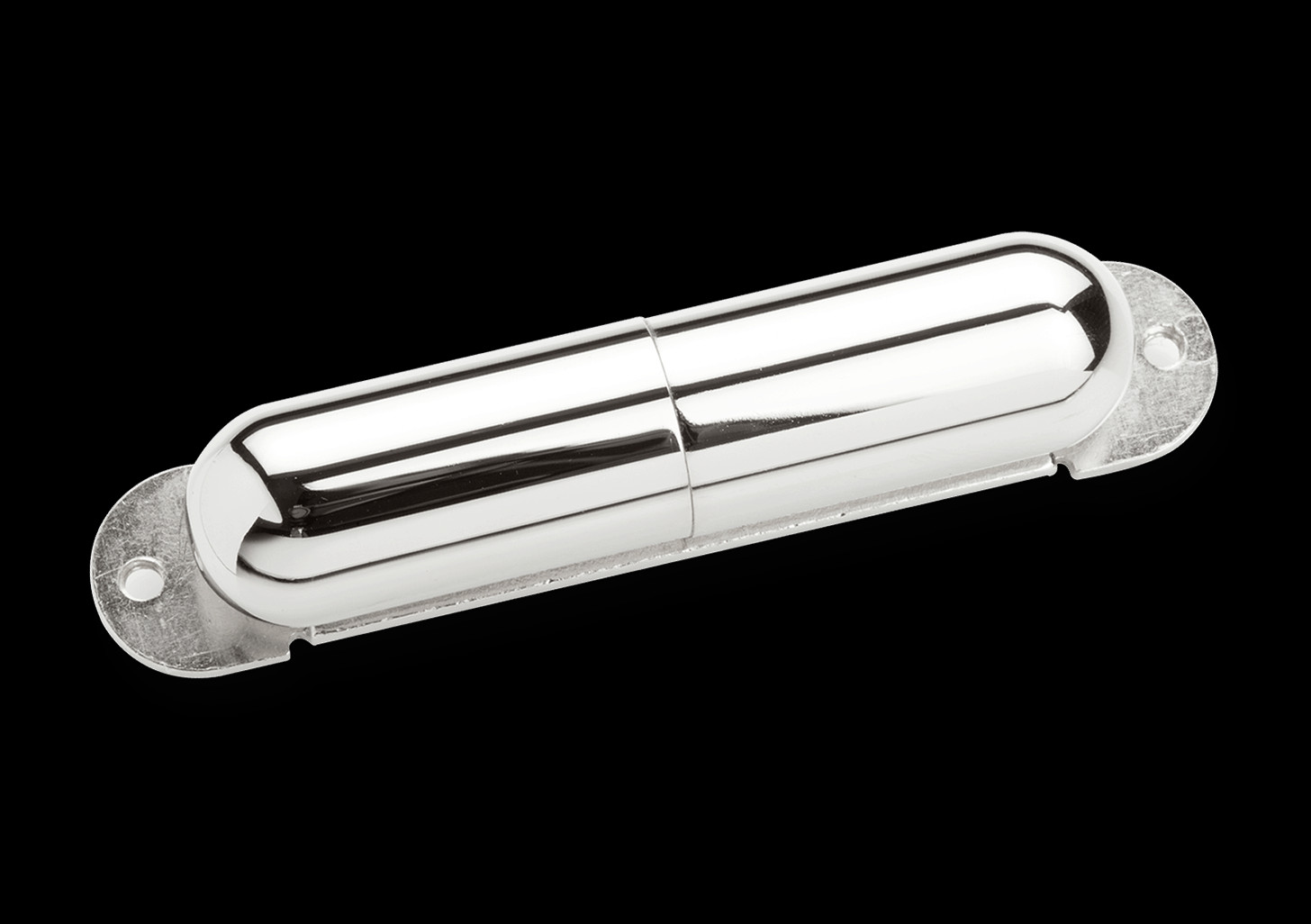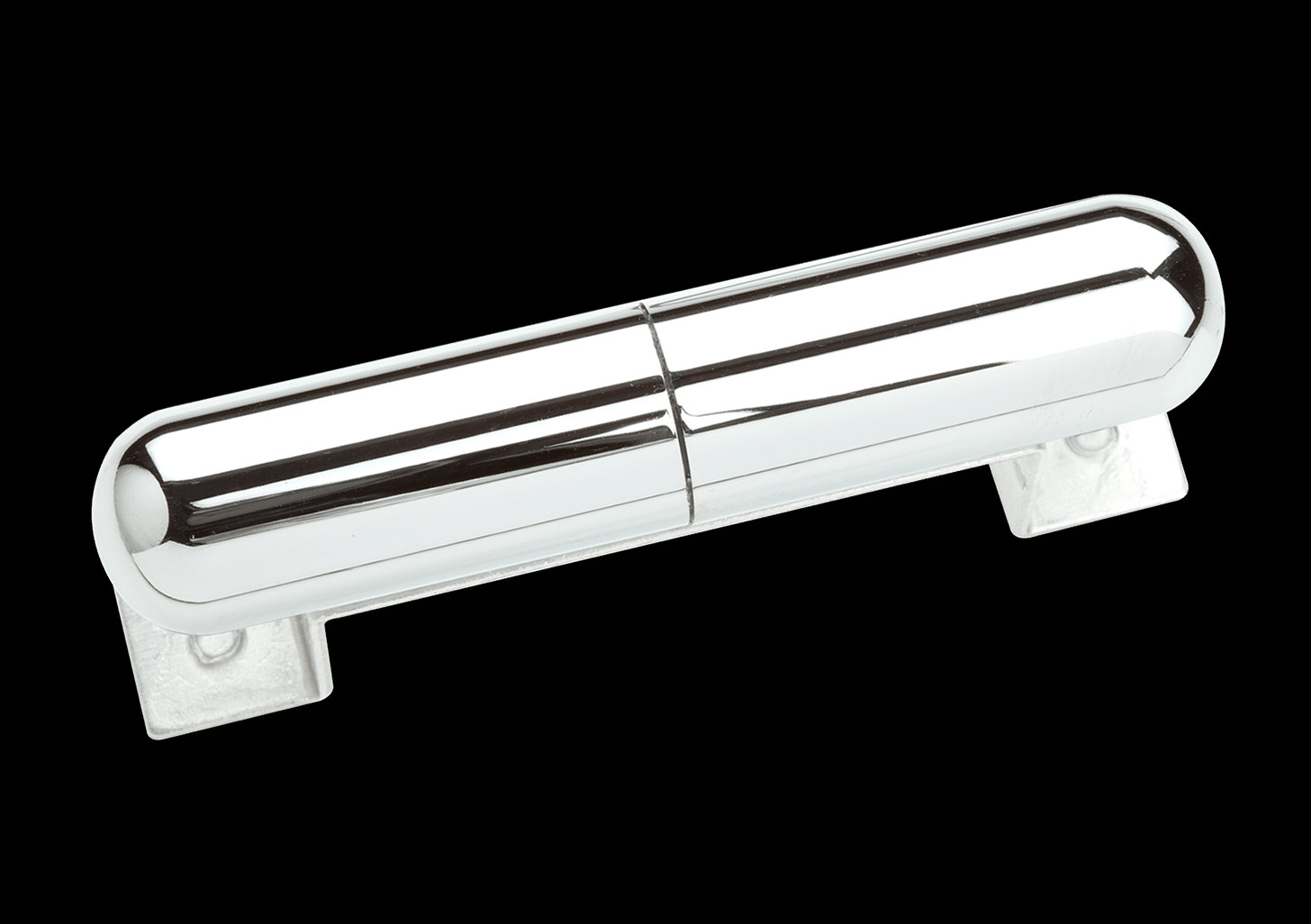Lipstick single-coil pickups: the name itself conjures a certain retro-cool mystique. Guitarists often pepper us with questions about these unique pickups, ranging from their sonic characteristics to their compatibility with various guitars. It’s understandable – they stand apart from typical Telecaster neck pickups or Stratocaster single-coils, carving out their own distinct niche in the guitar pickup landscape.
So, what exactly are lipstick pickups? To truly understand them, we need to delve into their captivating history, their distinctive construction, and their enduring association with Danelectro guitars.
The Genesis of Danelectro and the Lipstick Pickup
The story begins in the 1940s with Nathan Daniel, a visionary who found success crafting affordable electric instrument amplifiers under the Silvertone and Danelectro brands. Distributed through major retailers like Sears Roebuck, these amps offered aspiring musicians a gateway to amplified sound without breaking the bank. As the electric guitar craze exploded in the 1950s, Daniel expanded his lineup to include Danelectro and Silvertone guitars, once again targeting the budget-conscious beginner guitarist.
These guitars, often constructed from humble plywood, became the starting point for countless guitarists. While many players eventually sought out more refined instruments as their skills progressed, the unique sonic signature of Danelectros resonated with a select few. These guitars, while sometimes relegated to basements, also found their way onto grand stages and into iconic recordings, shaping the sound of rock and roll.
Iconic Artists and Timeless Tracks Powered by Danelectro
Perhaps the most celebrated example of the vintage Danelectro tone is heard in the powerful, yet surprisingly clean, riffs of Led Zeppelin’s “Kashmir.” Jimmy Page, a master of sonic exploration, demonstrated the surprising might of a Danelectro when paired with a thunderous bassline. Beyond “Kashmir,” Page also frequently employed his Danelectro for electrifying blues slide work, a fact readily apparent in vintage Led Zeppelin concert footage.
Mark Knopfler of Dire Straits is another notable player who recognized the unique voice of Danelectro guitars. These examples underscore the versatility and unexpected power hidden within these seemingly unassuming instruments and their distinctive lipstick pickups.
Deconstructing the Lipstick Pickup: Design and Materials
The magic of the Danelectro sound is undeniably linked to the singular pickups designed by Nathan Daniel. Their appearance instantly explains the “lipstick pickup” moniker. However, the name is more than just a visual descriptor; it reflects the ingenious and resourceful approach to their construction.
Daniel’s primary goal was to create single-coil pickups that were both sonically effective and economically viable to manufacture. Traditional methods involving custom-machined pole pieces and intricate bobbins, common in Fender and Gibson pickups, were deemed too costly. Instead, Daniel opted for a simpler approach: a relatively basic Alnico V bar magnet around which copper wire was directly wound. This assembly was then wrapped in cellophane tape, treated with vacuum wax potting for stability and noise reduction, and finally encased within repurposed lipstick tubes – genuine, mass-produced lipstick tubes sourced at a fraction of the cost of standard pickup covers.
These metal tubes not only provided a distinctive visual element but also served a functional purpose. The metal casing acted as shielding for the electronics, contributing to a reduction in unwanted noise and subtly mellowing the potentially harsh high-end frequencies inherent in the design. This resourceful innovation became a defining characteristic of the Danelectro sound.
The Sonic Fingerprint of Lipstick Pickups
The innovative construction of lipstick pickups not only met Daniel’s manufacturing objectives but also yielded a truly distinctive tone. Their inherent design characteristics, including size constraints and materials, resulted in a lower output and DC resistance, making them exceptionally well-suited for producing pristine clean tones.
Words like “jangly,” “chiming,” “clear,” and “detailed” frequently appear when describing the unique voice of lipstick pickups. While some might perceive their tone as bordering on brittle, many guitarists cherish their fast transient response and exceptional note articulation. Ryan Burke of the 60-cycle Hum Podcast aptly captured their essence, stating that “they basically sound the way they look,” suggesting a visual and sonic aesthetic that are intrinsically linked.
 Seymour Duncan lipstick tube strat pickup
Seymour Duncan lipstick tube strat pickup
Alt text: Seymour Duncan Lipstick Tube Strat bridge pickup, showcasing its chrome lipstick tube cover and Stratocaster-style mounting.
However, the sonic palette of lipstick pickups extends beyond just clean tones. When paired with an overdriven amplifier, they reveal a surprisingly aggressive side, delivering a snarling breakup with a looser, more resonant low end. This dynamic range, the ability to transition between delicate clarity and raw grit, is a key element of their appeal, captivating players who appreciate the edge between tonal control and expressive chaos.
Lipstick Pickup Wiring and its Contribution to Tone
While the pickups themselves are central to the Danelectro sound, the guitar’s overall construction and wiring scheme also play crucial roles. The semi-hollow or hollow bodies, often made from Masonite or plywood composites, contribute to the instrument’s resonance and unique tonal character. Furthermore, Danelectro’s typical wiring configuration enhances the lipstick pickup’s sonic versatility.
Danelectro guitars commonly feature a 3-way toggle switch offering distinct pickup selections. In the down position, only the bridge pickup is active. In the up position, the neck pickup is soloed. However, the center position engages both pickups wired in series. This series wiring configuration creates a noticeable boost in output and introduces a warmer, more pronounced midrange punch, adding depth and thickness that might be unexpected from the inherently bright nature of lipstick pickups.
The Enduring Legacy and Modern Reincarnations of Lipstick Pickups
Today, lipstick pickups and their signature tone remain inextricably linked to the Danelectro sound. Much like Filter’Trons define the Gretsch voice, PAFs are synonymous with Gibson, and Strat single-coils epitomize Fender, lipstick pickups are fundamental to the sonic identity of Danelectro guitars.
However, the use of lipstick pickups has expanded beyond the Danelectro brand. Pickups like the Seymour Duncan Lipstick Tube Strat, for example, are designed to seamlessly fit into standard Fender-style pickup routes, allowing Stratocaster players to incorporate this unique tone into their instruments. Even guitar legends like Stevie Ray Vaughan experimented with retrofitting lipstick pickups into their Strats. Fender themselves has even released factory models of Stratocasters equipped with lipstick pickups, acknowledging their growing appeal. While these guitars may not fully replicate the complete tonal profile of a vintage plywood Danelectro, they still infuse that characteristic twang and clarity into any guitar they grace.
 Seymour Duncan lipstick tube pickup
Seymour Duncan lipstick tube pickup
Alt text: Seymour Duncan Danelectro Lipstick Pickup, showcasing the classic lipstick tube casing and vintage-inspired design.
The internet is now replete with companies crafting modern replicas of lipstick pickups, catering to the ongoing demand for this unique sound. These contemporary designs often incorporate improvements in reliability and manufacturing consistency compared to vintage originals, while carefully preserving the essential sonic characteristics that make vintage lipstick pickups so sought after.
One common evolution is in the pickup covers. Modern lipstick pickups typically utilize custom-designed covers specifically manufactured for pickup applications, moving away from repurposed lipstick tubes. These purpose-built covers enable greater flexibility in size and shape, allowing lipstick pickups to be produced in various formats to fit popular pickup routes, including those designed for Stratocaster and Telecaster guitars.
Internal improvements further enhance modern lipstick pickup designs. The copper wire coil is now often wound around a precision-engineered plastic bobbin, which houses a centrally located Alnico bar magnet. These refinements result in pickups that retain the beloved lipstick pickup tone while offering enhanced reliability, consistency, and ease of manufacturing.
Furthermore, modern lipstick single-coil pickups often offer a wider range of wiring options and tonal variations. Looking at the (now discontinued) Seymour Duncan Danelectro Lipstick Tube pickup as an example, the neck model was designed with Reverse Wound/Reverse Polarity (RW/RP) configuration relative to the bridge model. This RW/RP design enables hum-canceling operation when both pickups are used in conjunction, minimizing unwanted noise. Additionally, the bridge model was engineered with a slightly higher output to achieve a balanced volume level when paired with the neck position pickup.
Despite these modern advancements, the allure of vintage and contemporary lipstick pickups remains strong. Modern artists like Phoebe Bridgers frequently perform with Danelectro guitars, showcasing their continued relevance in contemporary music. Danelectro itself continues to produce reissues of their classic models, built around the iconic lipstick pickup platform, ensuring that this unique sound remains accessible to new generations of players.
The enduring popularity of vintage lipstick pickups has made original examples increasingly rare and valuable. Finding authentic vintage units often requires dedicated searching, and they command premium prices in the used market. While modern iterations arguably offer improvements in consistency and reliability, some players remain devoted to the unique character of original vintage pickups.
For those seeking the genuine vintage experience, scouring for a vintage Danelectro guitar from the 1950s or 1960s, even one in need of repair, might be a viable strategy. In many cases, the value of the original lipstick pickups alone can exceed the value of the rest of the guitar, making it a worthwhile endeavor for tone-seeking enthusiasts. Happy hunting in your quest for that perfect lipstick pickup tone!
If you have further questions about lipstick pickups, their construction, or wiring configurations, please don’t hesitate to reach out. And be sure to explore the Seymour Duncan blog for a wealth of in-depth information on our diverse pickup designs, wiring guides, tone demonstrations, and much more.
